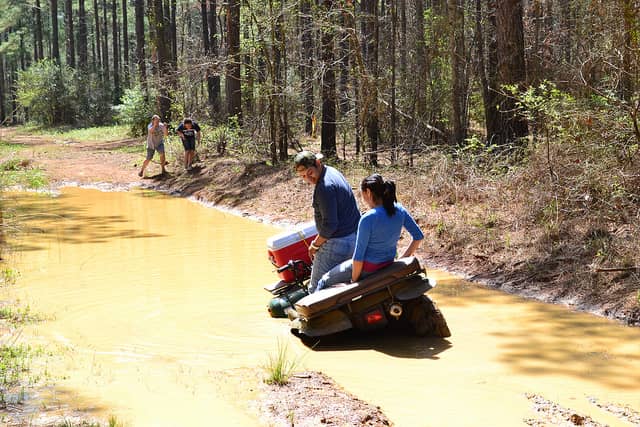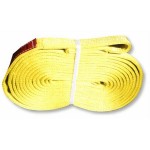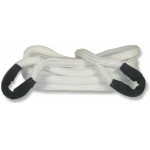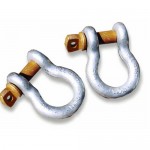ATV Recovery and ATV Towing
ATVCamper 07.27.12

I believe part of riding ATVs is knowing the proper method of ATV recovery and towing. Riding ATVs can be challenging at times when encountering certain terrain like mud, sand, snow and steep embankments. The opportunity to get stuck is always a possibility and the recovery operation is part of the fun.
When recovering a stuck ATV, one can use an ATV winch or a recovery strap or rope. If using a winch follow my ATV winching tips I wrote about earlier. This article is about the proper use of an ATV recovery strap or recovery rope to free a stuck ATV and how to tow a disabled ATV.

Before we get to the operation of recovering an ATV first lets discuss what a recovery strap or rope is. A recovery strap or rope has loops on each end without any hooks attached. The main reason not to use hooks for a recovery operation is simple. If the recovery strap or rope breaks, the hook is instantly turned into a deadly projectile.
Recovery straps and ropes have an elastic property meaning as one ATV attempts to pull another ATV out of a stuck situation the strap or rope will stretch like a rubber band. The kinetic energy in the strap or rope is transferred to the stuck ATV, pulling it out.
Before beginning a recovery operation always check your recovery gear. Make sure your recovery straps or ropes are in good condition and your hardware (d-rings) are free of rust and defects. After inspecting your recovery gear follow the following recommendations for recovering a stuck ATV.

1. Position the recovering ATV by backing it into a good pulling position with the stuck ATV. Always try to pull the stuck ATV straight and not at an angle if possible. If an angle has to be used make sure the stuck ATVs front tires are pointed in the direction of the pull.
2. Most ATVs have factory connection points for towing and pulling on the front and rear.
3. On the stuck ATV feed the strap or rope through the factory connection point or use a D-Ring Shackle if sharp edges exist. Never connect to an axle or suspension component (A-arm, shock, etc.).
4. On the recovery ATV connect the strap or rope to the rear connection point again using a D-ring if sharp edges exist. Using a hitch bracket with an attached shackle is a good connection point also. Never connect to a ball hitch.

5. Once the straps are secured to both ATVs move the recovery ATV forward slowly until the strap or rope is taught, then gradually increase power until the stuck ATV begins to move. Maintain power until the stuck ATV is free.
6. If the stuck ATV is able, gradually apply power at the same time as the recovery ATV and steer in the direction of the pull to aid in the recovery. Avoid sudden tugs or jerks with the recovery strap or rope.
7. Once the stuck ATV is freed disconnect the recovery strap or rope and gear unless the freed ATV is not able to move under it’s own power. Then with the strap or rope still taught slowly tow the disabled ATV back to the trailer or truck.
8. While towing, the towed ATV should keep the strap or rope tight by slowly applying the brake (if possible) when the recovery ATV slows to avoid tugs and jerks.
9. Always inspect your recovery gear after a recovery operation for damage and wear.
With the right knowledge the recovery operation is just part of the ATV riding experience. Every utility ATV should at least carry a recovery strap or rope even if equipped with an ATV winch. Click Here for all of your ATV recovery gear and be prepared for your next ATV recovery and towing operation.
This article originally appeared on CampingATV.com and is republished with permission.

